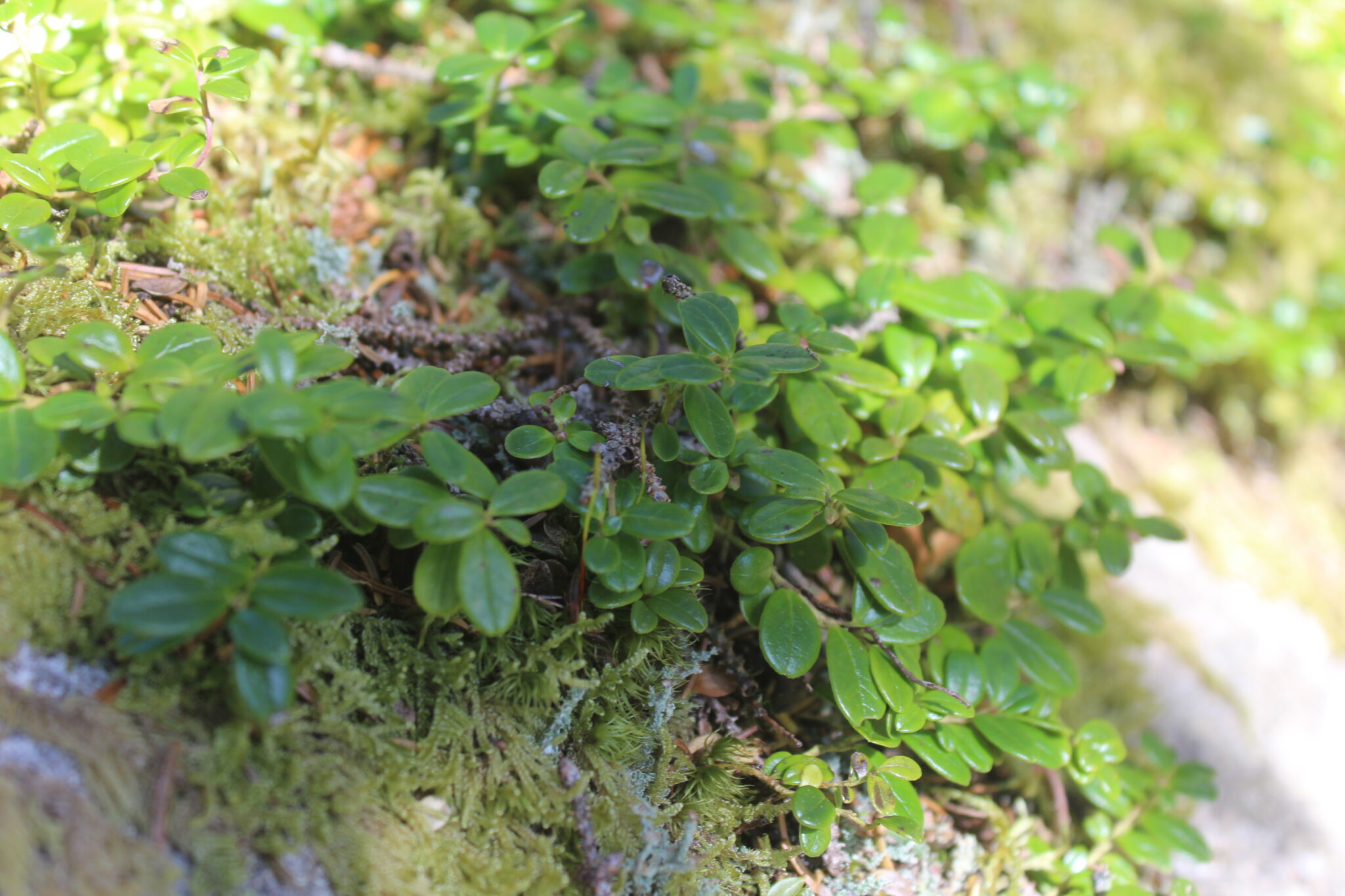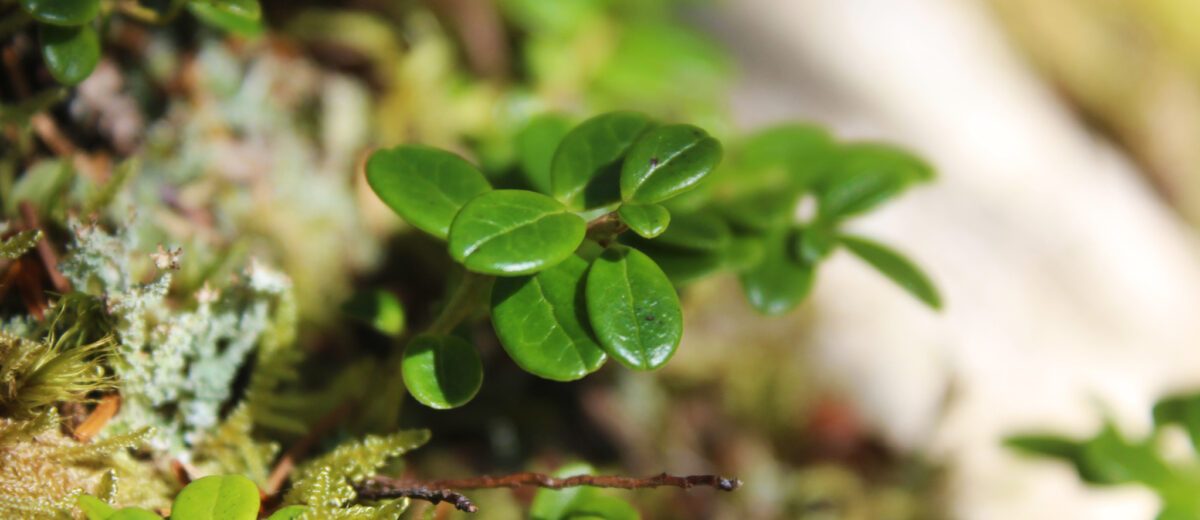story + photos by Trevor Grandin
Adages from Shakespeare’s library of classical works are everywhere in the modern day. The plants seem to have been reading up.
“Uneasy lies the head that wears a crown,” from Henry IV, relays the precarious nature of power and the tumult that often follows it, but taken more literally, the phrase provides an illustration of the mammoth sunflower. A gigantic annual that can grow upwards of 10 feet high, the flowers are so heavy they often cause the plant to slouch. The phrase “all that glitters is not gold” (from The Merchant of Venice) is embodied by marigolds. Despite their pleasing outward appearance, their scent is not golden to rabbits and deer.
Another oft-quoted line, from Romeo and Juliet, “A rose by any other name would smell as sweet,” sets the stage for the lingonberry.
Lingonberry (Vaccinium vitis-idaea), an often seen companion on trails in Acadia, is a hardy, evergreen shrub that thrives in cool, boreal environments. In the wild, it prefers well-drained ground and often pops up among the lichens and mosses that grow along the edges of hiking trails. A member of the heath family and cousin to the blueberry, lingonberry has a host of other names: mountain cranberry, foxberry and cowberry are a few.
The many names of the lingonberry are no doubt a product of its widespread range throughout the northern hemisphere. Lingon comes from Swedish, which in turn comes from the old Norse lyng that translates to “heather” or heath. Known colloquially as mountain cranberry in the northern United States, this name stems from the lingonberry’s proclivity for cold, rocky elevations and the similarity in taste and look to the American cranberry.
Many other names for the lingonberry describe the animals who have been known to graze on the foliage and berries: foxberry, cowberry, beaverberry, cougarberry and bearberry (also the name of Arctostaphylos uva-ursi).
Starting in spring, lingonberries produce small, white flowers, shaped like bells – similar to a Lily of the Valley. These flowers commonly develop in clusters and hang from the very tips of the stems. Next, the titular berry is formed on the tips of stems and can accompany the plant well into the winter.
As the above bevy of animal-forward names suggest, many species rely on the lingonberry for food throughout the year. Mammals like hares, moose, caribou and black bears feed on the foliage during the winter months. A more common nickname, cowberry, alludes to the fruit’s popularity among livestock. Many birds also eat the berries – including ptarmigan, ravens, gulls and geese, along with foxes.
The small, red berries have long been collected by people in much of Scandinavia and other northern climates and are often used in jam, baked goods, and wine. Similar to a traditional cranberry, the lingonberry fruit is often tart early in the season but sweetens as the snow melts. A lingonberry by any other name would taste as tart…
Citizen scientists have submitted 122 observations of lingonberry to the Schoodic Signals iNaturalist project, just missing the mark to be one of the top ten most identified species. Next time you find a lingonberry, perhaps it’ll make you ponder the same question Romeo did, “What’s in a name?”
[Note: In Acadia, the possession, injury, destruction, removal, or disturbance of park property or natural resources, including animals, plants, minerals, cultural, and archaeological objects is prohibited. This includes collecting rocks, cobbles, plants, marine organisms, other natural materials, and historic objects and artifacts. Many berries are poisonous and should not be eaten unless you are able to correctly identify the species and know that it is edible.]
https://www.nps.gov/acad/planyourvisit/park-rules-and-regulations.htm
https://gobotany.nativeplanttrust.org/species/vaccinium/vitis-idaea/

